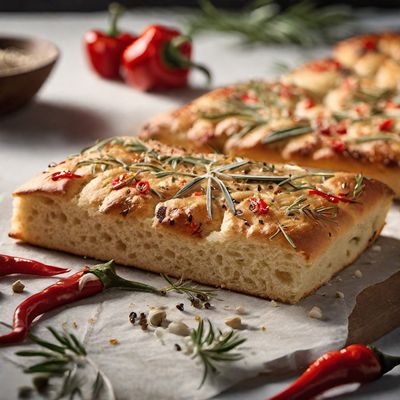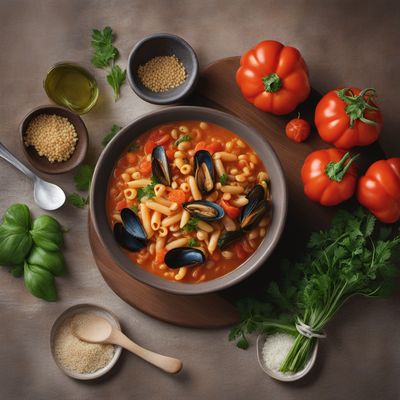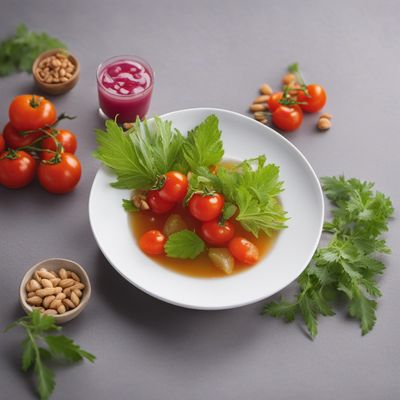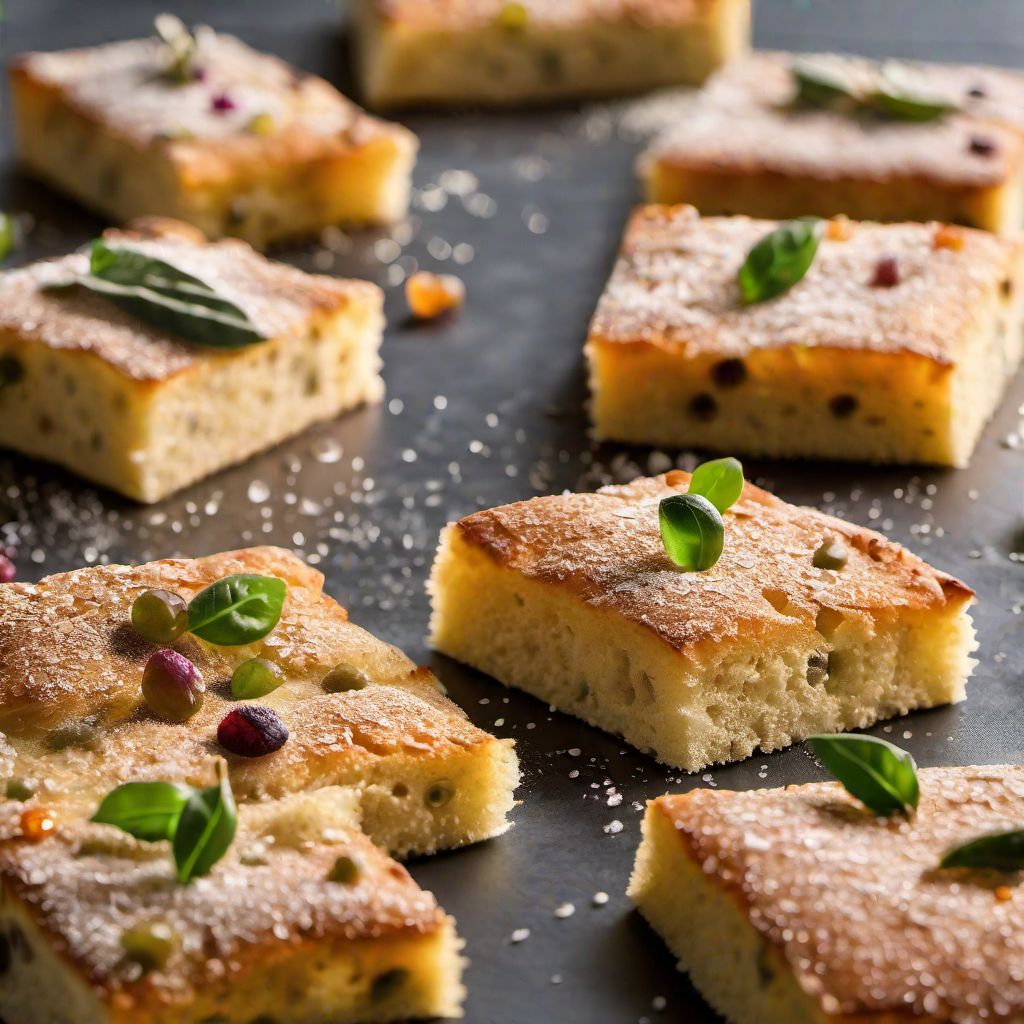
Recipe
Molecular Gastronomy Focaccia
The Futuristic Focaccia: Molecular Gastronomy Twist on an Italian Classic
4.9 out of 5
In the realm of molecular gastronomy, even traditional dishes like focaccia can be transformed into innovative culinary creations. This Molecular Gastronomy Focaccia recipe takes the beloved Italian bread to new heights, combining scientific techniques with the essence of Italian flavors. Get ready to embark on a gastronomic adventure that will tantalize your taste buds and challenge your perception of traditional cuisine.
Metadata
Preparation time
30 minutes
Cooking time
20-25 minutes
Total time
1 hour 55 minutes (including rising time)
Yields
4 servings
Preparation difficulty
Medium
Suitable for
Vegetarian, Vegan (if omitting the spherified cherry tomatoes), Gluten-free (if using gluten-free bread flour)
Allergens
Wheat (gluten)
Not suitable for
Paleo, Keto
Ingredients
While the original Italian focaccia is known for its simplicity and rustic charm, this molecular gastronomy adaptation introduces a whole new level of complexity. The texture of the bread is altered using techniques like spherification and foaming, creating a unique and visually stunning dish. Additionally, the flavors are intensified and enhanced through the use of innovative ingredients and molecular techniques. We alse have the original recipe for Focaccia, so you can check it out.
-
500g (4 cups) bread flour 500g (4 cups) bread flour
-
10g (2 tsp) instant yeast 10g (2 tsp) instant yeast
-
10g (2 tsp) salt 10g (2 tsp) salt
-
350ml (1 ½ cups) water 350ml (1 ½ cups) water
-
50ml (3 ½ tbsp) olive oil 50ml (3 ½ tbsp) olive oil
-
10g (2 tsp) sugar 10g (2 tsp) sugar
-
5g (1 tsp) xanthan gum 5g (1 tsp) xanthan gum
-
10g (2 tsp) calcium lactate 10g (2 tsp) calcium lactate
-
10g (2 tsp) sodium alginate 10g (2 tsp) sodium alginate
-
500ml (2 cups) water (for spherification) 500ml (2 cups) water (for spherification)
-
100g (3.5 oz) cherry tomatoes, halved 100g (3.5 oz) cherry tomatoes, halved
-
10g (0.35 oz) fresh rosemary leaves 10g (0.35 oz) fresh rosemary leaves
-
Sea salt flakes, for sprinkling Sea salt flakes, for sprinkling
Nutrition
- Calories: 250 kcal / 1046 kJ
- Fat: 8g (Saturated Fat: 1g)
- Carbohydrates: 38g (Sugars: 1g)
- Protein: 6g
- Fiber: 2g
- Salt: 1g
Preparation
-
1.In a large mixing bowl, combine the bread flour, instant yeast, and salt.
-
2.In a separate bowl, mix together the water, olive oil, and sugar until the sugar is dissolved.
-
3.Gradually pour the wet ingredients into the dry ingredients while stirring with a wooden spoon.
-
4.Once the dough comes together, transfer it to a floured surface and knead for 10 minutes until smooth and elastic.
-
5.Place the dough in a greased bowl, cover with a damp cloth, and let it rise in a warm place for 1 hour or until doubled in size.
-
6.Meanwhile, prepare the spherified cherry tomatoes. Mix the calcium lactate with 500ml of water until dissolved. In a separate bowl, mix the sodium alginate with 500ml of water until dissolved. Drop small spoonfuls of cherry tomato halves into the calcium lactate solution and let them sit for 5 minutes. Then, transfer the tomato halves into the sodium alginate solution and let them sit for another 5 minutes. Rinse the spherified tomatoes with water and set aside.
-
7.Preheat the oven to 220°C (425°F).
-
8.Punch down the risen dough and transfer it to a greased baking sheet. Gently stretch the dough to cover the entire sheet.
-
9.Using a dropper or syringe, create foams by injecting air into the dough at various spots.
-
10.Arrange the spherified cherry tomatoes and fresh rosemary leaves on top of the dough.
-
11.Sprinkle the focaccia with sea salt flakes.
-
12.Bake in the preheated oven for 20-25 minutes or until golden brown.
-
13.Remove from the oven and let it cool slightly before serving.
Treat your ingredients with care...
- Bread flour — Use high-quality bread flour for the best texture and rise.
- Xanthan gum — This ingredient helps improve the elasticity of gluten-free bread. If using regular bread flour, you can omit it.
- Calcium lactate and sodium alginate — These are essential for spherification. Ensure they are fully dissolved in water before using.
- Cherry tomatoes — Choose ripe and flavorful cherry tomatoes for the best results.
- Fresh rosemary — Use fresh rosemary leaves for a fragrant and aromatic touch.
Tips & Tricks
- Experiment with different flavors by adding herbs, spices, or even molecular gastronomy powders to the dough.
- For a more intense rosemary flavor, infuse the olive oil with rosemary leaves before adding it to the dough.
- If you don't have a dropper or syringe for creating foams, you can use a handheld electric mixer to incorporate air into the dough.
- Serve the focaccia warm for the best texture and flavor.
- Store any leftovers in an airtight container at room temperature for up to 2 days.
Serving advice
Serve the Molecular Gastronomy Focaccia as an appetizer or alongside a molecular gastronomy-inspired main course. Cut it into small squares or slices for easy serving.
Presentation advice
Present the focaccia on a sleek and modern serving platter. Garnish with additional fresh rosemary leaves and sprinkle some edible molecular gastronomy powders for an artistic touch.
More recipes...
More Italian cuisine dishes » Browse all
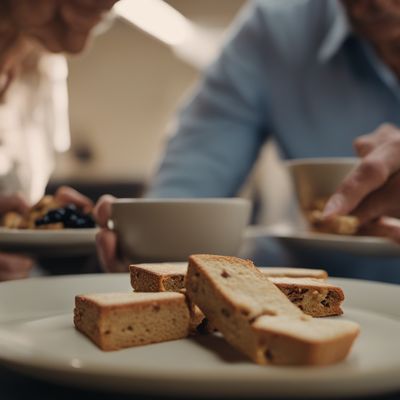
Biscotti dei poveri
Poor Man's Biscotti
Biscotti dei poveri, also known as "poor man's biscotti," is a traditional Italian cookie that has been enjoyed for centuries. These simple, yet...
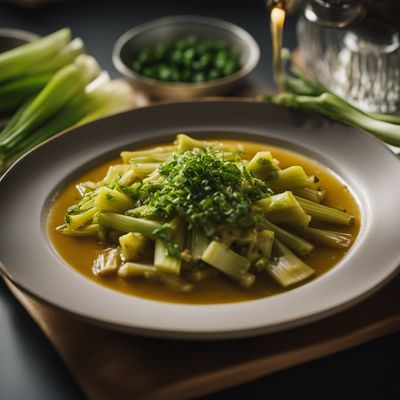
Porri in umido
Braised Leeks
Porri in umido is a traditional Italian dish made with leeks and a tomato-based sauce. It is a hearty and flavorful dish that is perfect for a...
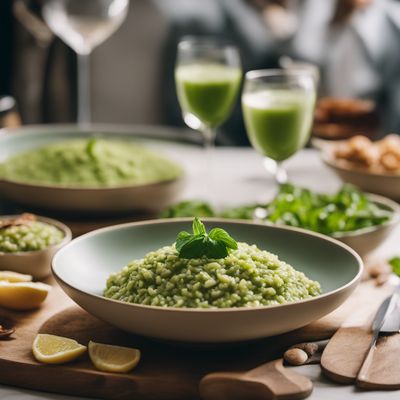
Risotto verde
Green Risotto
Risotto verde is a classic Italian dish that is made with fresh herbs and vegetables. This dish is perfect for vegetarians and anyone who loves...
